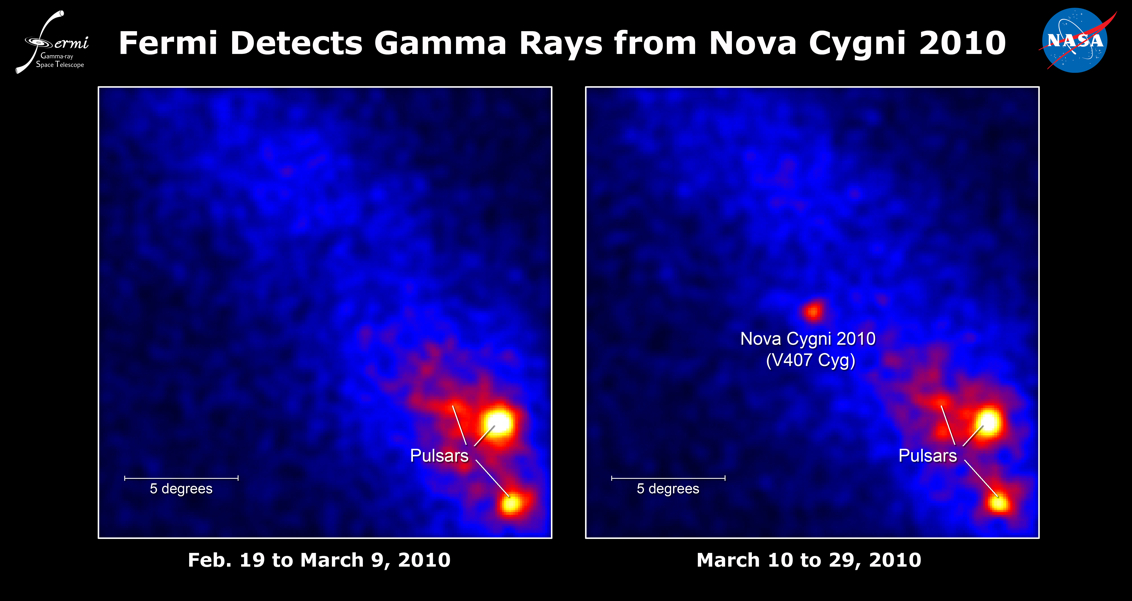
 Credit: NASA/DOE/Fermi LAT Collaboration
Credit: NASA/DOE/Fermi LAT Collaboration
Gamma Nova
In the early morning hours of March 11, 2010, two amateur astronomers in Japan made an amazing discovery: a variable binary star called V407 Cyg brightened by an enormous amount. Such a brightening, called a nova, happens whenever the Red Giant component of V407 Cyg deposits enough hydrogen onto the surface of its companion, a dead ember of a solar-type star called a white dwarf. When enough H accumulates on the surface of the white dwarf it converts to He, helium, in a flash producing as much energy in an instant as the Sun emits in 10 centuries. Nova explosions have been known for centuries and understood for decades. But they still have some surprises up their sleeves, as shown above. The false-color image above is a Gamma-ray picture from the Fermi Large Area Telescope (LAT), showig the sky around V407 Cyg. The image on the left was obtained by the LAT just before the nova explosion. Aside from a few known Gamma-ray pulsars, there's no detectable source near V407 Cyg. But after the nova explosion, Gamma-ray emission from V407 Cyg was clearly detected by the LAT, the first time high-energy Gamma-ray emission was seen from a nova. Astronomers still are not sure how a relatively modest explosion like a nova could produce such intense, high energy emission. The best guess so far is that the high energy Gamma-rays were produced when charged particles, accelerated by the blast wave from the nova moving at millions of miles per hour, collided with the slow moving wind from the Red Giant. The sudden deceleration of these fast moving subatomic particles by the Red Giant wind should cause the emission of Gamma-ray radiation.
Published: August 16, 2010
<
HEA Dictionary ● Archive
● Search HEAPOW
● Other Languages
● HEAPOW on Facebook
● Download all Images
● Education ● HEAD
>

Each week the HEASARC
brings you new, exciting and beautiful images from X-ray and Gamma ray
astronomy. Check back each week and be sure to check out the HEAPOW archive!
Page Author: Dr. Michael F. Corcoran
Last modified Tuesday, 27-Feb-2024 10:15:20 EST


